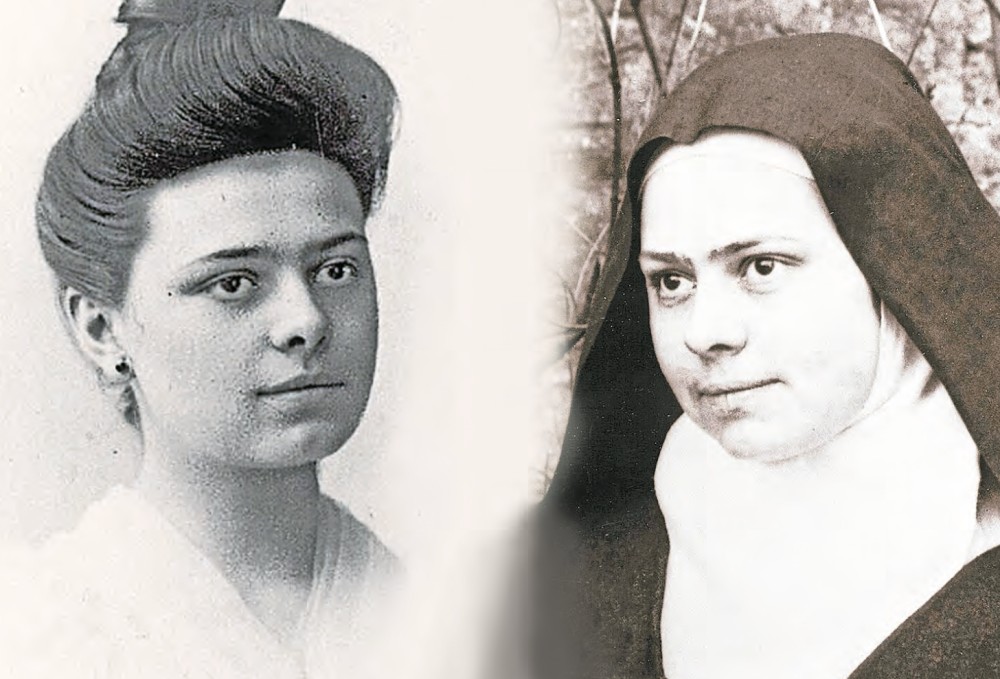
DUNWOODIE — Elizabeth Palombo didn’t know much about St. Elizabeth of the Trinity before she attended a symposium at St. Joseph’s Seminary and College in Yonkers that focused on the life and influence of the French saint.
That changed soon after she and her husband arrived at the “St. Elizabeth of the Trinity: The Mystery of Christian Prayer” event, which took place Aug. 8-11 and featured Masses, presentations by clergy leaders, exposition of the Blessed Sacrament, and novenas.
“I love what I’m learning about St. Elizabeth,” said Palombo, a Blessed Trinity, Breezy Point parishioner who heard about the symposium from a friend in her book club. “She was an inspirational person. She suffered a lot and was sick and still kept her faith.”
The symposium was designed to familiarize the faithful with a saint who isn’t a household name to many, according to Bishop John Barres of the Diocese of Rockville Centre.
St. Elizabeth of the Trinity (1880-1906) was a Discalced Carmelite nun and mystic who was known for her devotion to the Blessed Trinity, her spiritual writings, and her efforts to encourage the faithful to find a relationship with God through deep prayer.
John Blackabar, who lives in New Jersey and is preparing to become a Franciscan Friar of the Immaculate, said that St. Elizabeth’s call to prayer appealed to him.
“The friars pray a lot, a lot more than I do right now. I figure I should learn more about prayer,” he added. “I think I can use this symposium to grow in the vocation that I feel God has called me to do.”
St. Elizabeth’s devotion to the Blessed Trinity began when she was a child.
Born Elizabeth Catez in Avord, a village in central France, on July 18, 1880, she displayed a terrible temper as a child but gained a measure of self-control when she received her first Communion at age 11 in 1891.
“St. Elizabeth of the Trinity threw temper tantrums as a girl. Isn’t that encouraging?” asked Bishop Barres, pointing out that the saints possessed human frailties when they were on earth and were, therefore, approachable.
After Communion, Elizabeth developed a deep understanding of the Blessed Trinity. She would visit the sick and also walk into factories to teach the faith to the children who worked there.
Believing God’s word would transform her life, Elizabeth entered a Discalced Carmelite monastery in Dijon, France, in 1901 at age 21.
But shortly after joining, she became ill with a stomach ailment, now believed to have been Addison’s disease, and suffered great pain for the next five years.
Despite her health challenges, St. Elizabeth became a prodigious writer, sending a total of 76 letters during a seven-month period in 1906, the year she died at age 26.
In addition, she penned four treatises on spiritual matters — “Heaven in Faith,” “The Greatness of Our Vocation,” “Last Retreat,” and “Let Yourself Be Loved.”
She died on Nov. 9, 1906, and according to the Carmelite Sisters website, her last words were, “I am going to light, to love, to life.”
She was beatified by St. Pope John Paul II in 1984 and canonized by Pope Francis in 2016, and is the patron saint of sick people and the loss of parents.
During World War I, her writings were read by soldiers in the trenches on the front lines, who found great comfort in her words.
“Looking at St. Elizabeth of the Trinity and all of the Carmelite saints, we are recognizing their mystical genius,” Bishop Barres told The Tablet. “And yet they’re with us, encouraging us where we are at — in our weaknesses, in our resistances to grace, the lack of discipline or laziness, which all of us deal with. I think the message is: Don’t be discouraged.”
The symposium attracted nearly 200 people, and Father Ignatius Schweitzer, O.P., the seminary’s director of spiritual formation, said the high level of interest reflected a deep yearning among the faithful.
“Certainly, there is a hunger for God in an age of secularism. That hunger is becoming all the more acute,” he explained. “So when you have a saint like Saint Elizabeth, who’s showing us a way through prayer that tugs at the heartstrings, it’s a great thing.”
